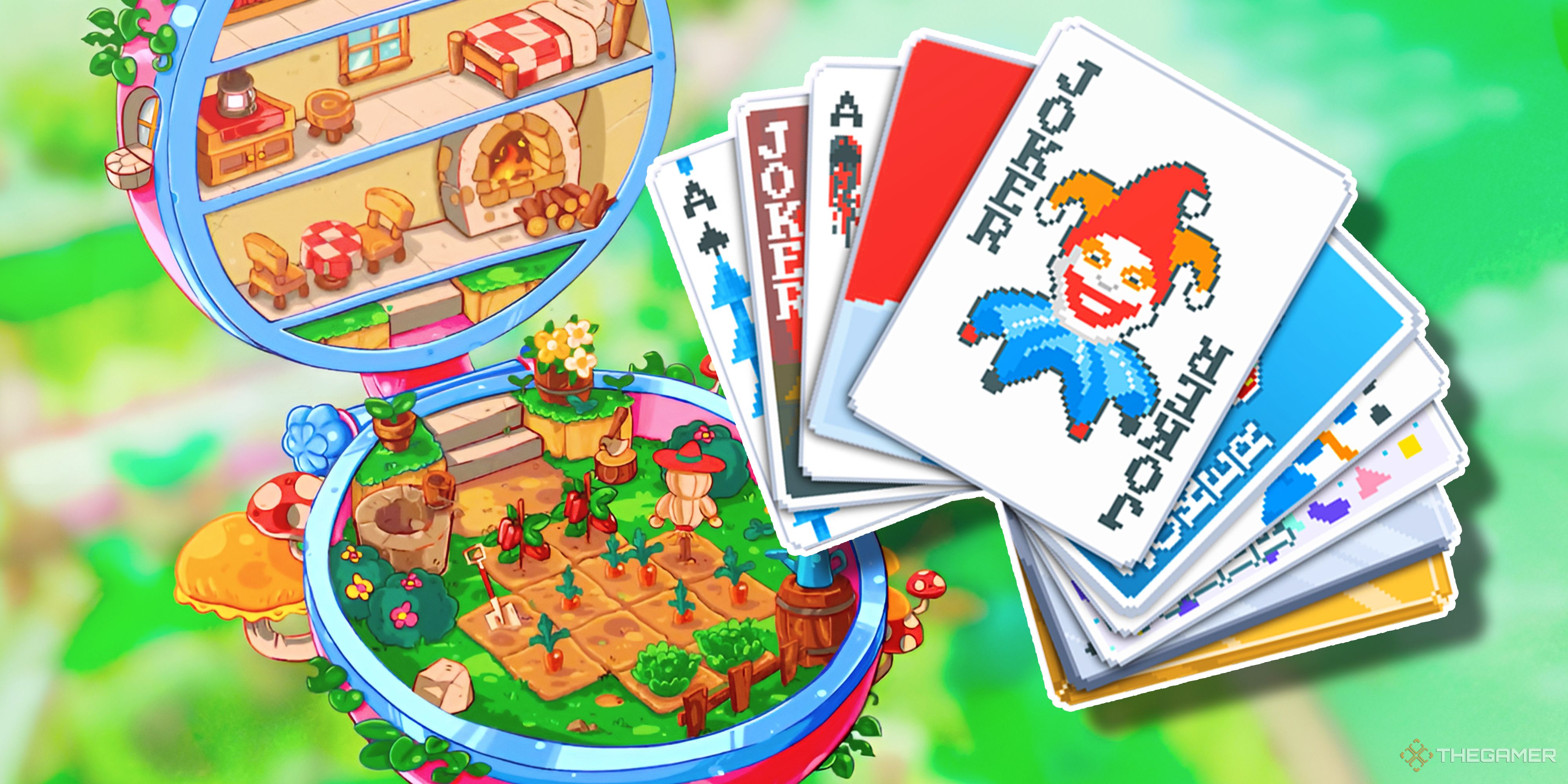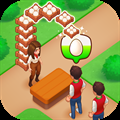This Cute Farming Sim Is Secretly A Balatro Successor

I’m easily sold on most things. It just takes one element to appeal to me, and I’ll dive in feet first. The fact that Tiny Garden takes place in what is essentially a Polly Pocket toy was all I needed. If you grew up in the ‘90s, you know exactly what I mean, but for those unfamiliar, Polly Pockets were plastic clamshells that housed different environments (usually a home setting) that you could place your little Polly (like a small Barbie) figures into.
There could have been any genre tied to this, and I would have played it purely because of that pocket-sized nostalgia it ignited in me. Fortunately, the genre also ticked the box for me: farming sim. Or at least, that’s what I thought.
RelatedI Hate Blue Prince For What It’s Done To Me
Blue Prince is so smart, it makes me feel stupid.
PostsPolly Pocket Puzzler
At first glance, Tiny Garden is an adorable farming sim where you plant a little garden in the base layer, harvesting your fruits and veggies to unlock new plants, upgrades, and furnishings. On the side of the toy is a crank, and you turn this to make time pass and plants grow, and your garden space becomes larger the further you progress.
The upper layer can then be decorated to make it resemble a Polly Pocket even more, and you can change the colour scheme of the case, garden, or furnishings, put stickers on your toy, and customise the layout with different items. Yet when you really start playing, you’ll realise this is a puzzle game in disguise.
It starts out simple enough with your first turnip, but when you plant your first cactus, this changes the tiles around it to arid soil type, while bushes also change the surrounding tiles to lush terrain. However, if you remove the plant affecting the terrain, the soil only stays that way for a couple of turns.
By the time I needed to grow a potato, I needed wet soil, which can only appear if you combine an arid tile with a water tile. Alright, no problem. I bought a fountain to create wet tiles, planted my cactus, and boom, bash, bosh, there’s my wet soil. It starts out fairly straightforward and easy, but it gets all the more complicated from there.
Plant Problem Solver
CloseSince your produce is also your currency for unlocking items and seeds, I was harvesting everything as soon as it was ready. That was my first mistake. When I needed to grow a sunflower, which needed lush vegetation, I found myself with a wilted mess as sunflowers take three crank turns to grow, and my lush tiles only lasted two tiles once the bushes were removed.
That’s when I realised I had to start leaving certain plants in place, always ensuring I had access to specific tiles. You have to maximise the small space you’re allocated, so perhaps you’ll need to grow some plants one at a time, but at least you’ll always have the tiles you need readily available.
Each mistake will set you back, as every plant needs certain produce to purchase. It’s a chain reaction. A sunflower seed costs one cabbage and one fern. Ferns require one raspberry and one grass… and so on, going like 15 produce items deep. You’ll end up starting out with your trusty turnips again and having to build back up to where you need to be, which can be quite frustrating. Now you can see why I tried my hardest to keep my tiles in place.
Things get more complicated the further you progress. You’ll need to unlock tools, like the gnome that walks along and creates a leafy tile, or trees that create sheltered tiles, while some plants work in conjunction with others, such as ivy needing a tree to climb, but ensnaring all surrounding tiles while there. If you want to collect the ivy, you have to remove your tree too. There’s always a dilemma.
Some plants are invasive and will spread; in particular, bamboo falls into this category, but you can only clear it if it’s wilted, so you have to purposefully place something to change its tile to something it won’t flourish in. Doing this might mean inadvertently making other surrounding tiles wilt that you don’t want to lose, then you have to replace them.
Peppers set their tile aflame, which is great in one regard, as you want the charred ground tile for some plants, but unfortunately, that fire can spread. Fortunately, moving my fountain quickly doused that problem. Every step of the way, you must react to new situations and plan ahead as much as possible, but one new mystery plant can mess up all your best-laid plans.
Every time I had to restart my chain of fruits and veggies felt like a new roguelike run, and considering how unexpected chains and plants could be, each ‘run’ could end from one single bad choice and bad luck of where you decided to plant something. The strategy involved in setting up your garden to future-proof your run and combos reminded me of Balatro; you have to lay the groundwork, invest in the right cards, decide when to grab a tag or play, and ensure each run lasts as long as possible. That’s what Tiny Garden became for me. One more run. Just to unlock one more plant. And it never really ended at just ‘one more’.
A Gardening Sim That Grows Into A Puzzle Game
In a bizarre twist of fate, what I thought would be a cosy, Polly Pocket-esque farming sim turned out to be a charming little puzzle game. It still delivers on the cosy factor, but there’s a challenge to its puzzle gameplay that keeps you coming back for more.
I have yet to unlock all plants and decorations, and I know my little toy could certainly do with a more efficient setup and better decorations, but that’s all part of the fun. Experimenting with the restricted space you have to find the best way to grow your goods is part of the bigger puzzle, and let’s face it, you also want your garden to look cute.
I wish it worked better on Steam Deck, as this is precisely the kind of easy to pick up and play game I’d love to play to kill time on the move, but unfortunately, it didn’t seem to gel well with the Steam Deck button setup. As the summer sun begins to arrive and brighten up the miserable British weather, this little slice of gardening sim puzzle combo was exactly what I needed to relax. It’s not like I’m ever going to really go out in my garden, so this is as close as I’ll get.
8 Images 8 Images CloseYour Rating
close 10 stars 9 stars 8 stars 7 stars 6 stars 5 stars 4 stars 3 stars 2 stars 1 star Rate Now 0/10Your comment has not been saved
Like Follow FollowedTiny Garden
Casual Simulation Farming Puzzle Systems OpenCritic Reviews Critics Rec: 86% Released April 8, 2025 Developer(s) Ao Norte Publisher(s) Super Rare Originals Engine Godot Engine Number of Players Single-player Steam Deck Compatibility PlayableWHERE TO PLAY
DIGITAL












